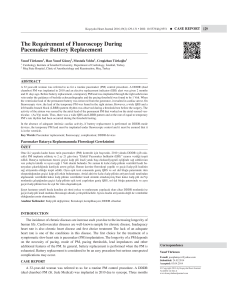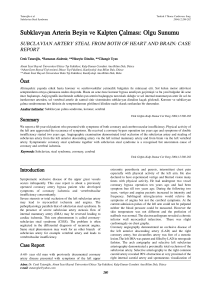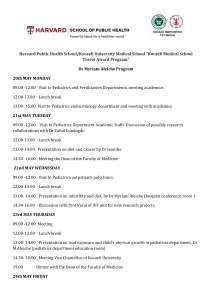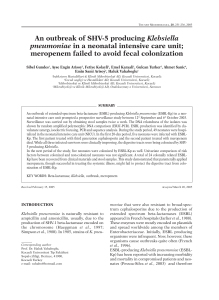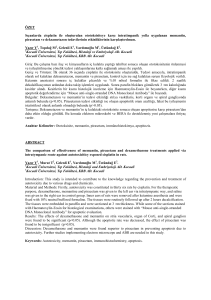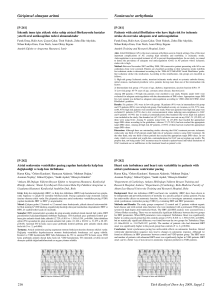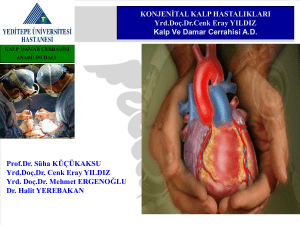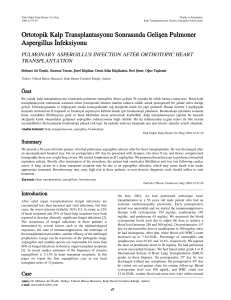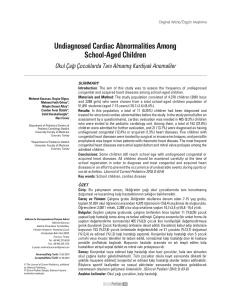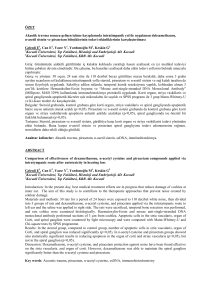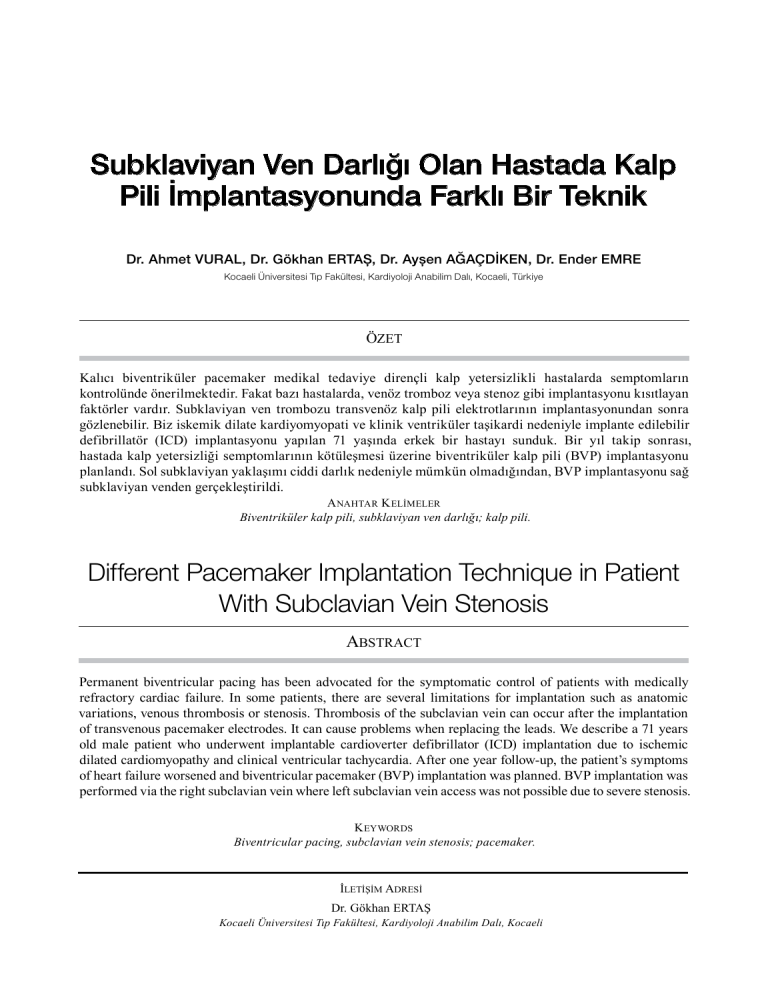
Subklaviyan Ven Darlığı Olan Hastada Kalp
Pili İmplantasyonunda Farklı Bir Teknik
Dr. Ahmet VURAL, Dr. Gökhan ERTAŞ, Dr. Ayşen AĞAÇDİKEN, Dr. Ender EMRE
Kocaeli Üniversitesi Tıp Fakültesi, Kardiyoloji Anabilim Dalı, Kocaeli, Türkiye
ÖZET
Kalıcı biventriküler pacemaker medikal tedaviye dirençli kalp yetersizlikli hastalarda semptomların
kontrolünde önerilmektedir. Fakat bazı hastalarda, venöz tromboz veya stenoz gibi implantasyonu kısıtlayan
faktörler vardır. Subklaviyan ven trombozu transvenöz kalp pili elektrotlarının implantasyonundan sonra
gözlenebilir. Biz iskemik dilate kardiyomyopati ve klinik ventriküler taşikardi nedeniyle implante edilebilir
defibrillatör (ICD) implantasyonu yapılan 71 yaşında erkek bir hastayı sunduk. Bir yıl takip sonrası,
hastada kalp yetersizliği semptomlarının kötüleşmesi üzerine biventriküler kalp pili (BVP) implantasyonu
planlandı. Sol subklaviyan yaklaşımı ciddi darlık nedeniyle mümkün olmadığından, BVP implantasyonu sağ
subklaviyan venden gerçekleştirildi.
A NAHTAR K ELİMELER
Biventriküler kalp pili, subklaviyan ven darlığı; kalp pili.
Different Pacemaker Implantation Technique in Patient
With Subclavian Vein Stenosis
ABSTRACT
Permanent biventricular pacing has been advocated for the symptomatic control of patients with medically
refractory cardiac failure. In some patients, there are several limitations for implantation such as anatomic
variations, venous thrombosis or stenosis. Thrombosis of the subclavian vein can occur after the implantation
of transvenous pacemaker electrodes. It can cause problems when replacing the leads. We describe a 71 years
old male patient who underwent implantable cardioverter defibrillator (ICD) implantation due to ischemic
dilated cardiomyopathy and clinical ventricular tachycardia. After one year follow-up, the patient’s symptoms
of heart failure worsened and biventricular pacemaker (BVP) implantation was planned. BVP implantation was
performed via the right subclavian vein where left subclavian vein access was not possible due to severe stenosis.
K EYWORDS
Biventricular pacing, subclavian vein stenosis; pacemaker.
İLETİŞİM ADRESİ
Dr. Gökhan ERTAŞ
Kocaeli Üniversitesi Tıp Fakültesi, Kardiyoloji Anabilim Dalı, Kocaeli
Subklaviyan Ven Darlığı Olan Hastada Kalp Pili İmplantasyonunda Farklı Bir Teknik
Case Report
Currently available pacemaker lead technology and appropriate experience, left ventricular
pacing can be undertaken through the left-sided
epicardial tributaries of the coronary sinus with a
high success rate (1). In some patients, there are
several limitations for implantation such as anatomic variations, venous thrombosis or stenosis. We presented an image of a 71 years old male patient who underwent intracardiac defibrillator (ICD) implantation due to ischemic dilated
cardiomyopathy and clinical ventricule tachycardia. The underlying diagnoses were ischemic dilated cardiomyopathy, left bundle branch blocke
on ECG, NYHA III class, ventricular conduction delay (QRS>120 msn), reduced left ventricular ejection fraction (%30) (2,3). At that time we
planned to implant biventricular pacemaker with
ICD implantation. Right atrium and right ventricule leads were positioned bu we couldn’t succeed advance the coronary sinus lead. After one year follow-up, the patient’s symptoms of heart failure worsened (NYHA functional class IV), despite adequate medical therapy, requiring repeated hospital admissions. So we planned to imp-
135
lant another lead to coronary sinus again. But left
subclavian venography revealed a severe stenosis
(Figure-1-A). Subacute and chronic axillary and
subclavian occlusion is a well-described complication of cardiac device implantation, occurring
in up to 25% of cases (4). So the right subclavian
vein was used in patient for left ventricular lead
positioning (Figure-1-B). This lead was advanced
to pacemaker subcutaneously. After follow up,
patient discharged uneventfully. Clinical and echocardiographic improvement was observed during follow-up. In those patients undergoing biventriculer pacemaker implantation, right subclavian vein approache should be considered.
R EFERENCES
1. Walker S, Levy T, Rex S, Brant S, Paul V. Initial United
Kingdom experience with the use of permanent, biventricular pacemakers: Implantation procedure and technical
considerations. Europace 2000; 2: 233–239.
2. Vural A, Ağaçdiken A, Komsuoğlu Baki.Biventricular
pacemaker. Turkiye Klinikleri J Int Med Sci 2005; 1: 6-21.
3. Abraham WT, Hayes DL. Cardiac resynchronization
therapy for heart failure. Circulation 2003; 108: 2596–603.
4. Rozmus G, Daubert J.P, Huang D.T, Rosero S, Hall
B, Francis C. Venous thrombosis and stenosis after
implantation of pacemakers and defibrillators. Journal
Interventional Cardiology and Electrophysiology 2005; 13:
9–19.
FİGURE 1
(A) Left subclavian venography revealed a severe stenosis. (B) Coronary sinus lead was implanted through right subclavian vein.
CİLT 9, SAYI 3, Ekim 2011


